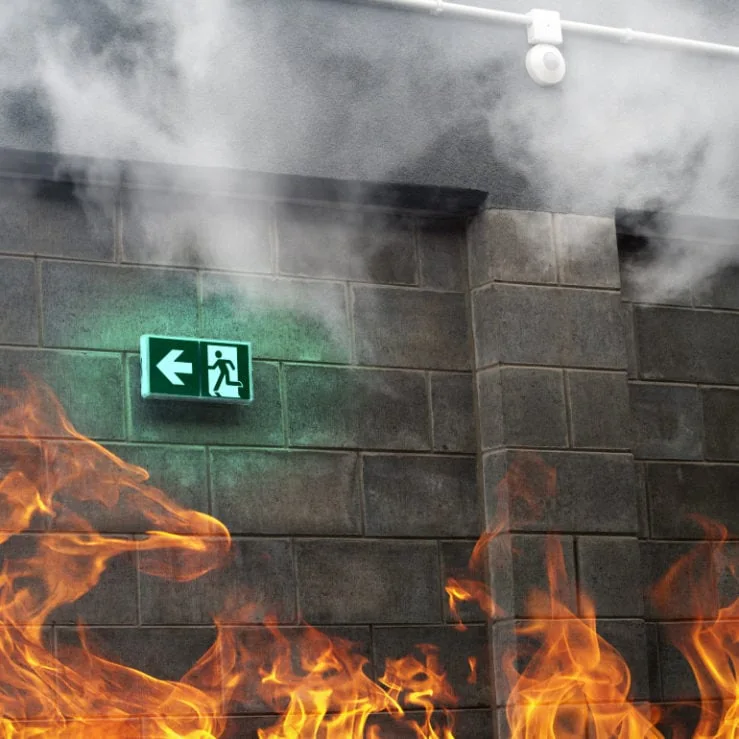One of the key ways to make business premises safe and fire safety compliant is fire compartmentation. If a fire breaks out, this can limit damage, reduce pressure on emergency services and ultimately save lives.
In our latest Q&A, we explore why fire compartmentation is so important, how to implement it properly within your premises, and who’s legally responsible.
What is fire compartmentation?
Fire compartmentation is the practice of dividing a building into separate fire-resistant sections. This is achieved by installing a range of different fire safety measures into each section. This includes (but is not necessarily limited to) fire doors, cavity barriers and fire-resistant materials. Usually, these materials will offer between 30 minutes and 2 hours of fire resistance.
What is its main objective?
With effective measures in place, fire and smoke can’t easily spread, whether across rooms, up and down levels, or across into adjoining buildings.
Slowing down the spread of a fire enables easier escape for anyone within the building, and reduces the size of the fire that emergency services have to deal with. It also means that the scale of any damage can be limited.
Who is responsible for fire compartmentation in commercial buildings?
Fire compartmentation comes under the purview of the ‘Responsible Person’ as part of the Regulatory Reform (Fire Safety) Order 2005. If you are a business owner or employer, or you own, run or manage a commercial property, you are legally recognised as a Responsible Person.
As a Responsible Person, you hold full responsibility for all matters pertaining to fire safety. You are required to ensure that all fire risks are minimised, and that any safety installations are executed to a sufficient and compliant standard.
Who should install fire compartmentation?
You should only use a competent and qualified third-party contractor to install fire compartmentation. Ideally, they should be certified by a recognised scheme – such as BM Trada Q-Mark. They ensure that their products and workmanship meet the highest standards of quality and compliance.
How can I ensure my building remains compliant?
Firstly, your ‘Responsible Person’ should commission a fire risk assessment, to be carried out by a competent and qualified assessor. They will identify your level of compliance with fire compartmentation needs, and pinpoint areas where further passive fire protection measures, replacement measures and/or fire stopping is needed.
What is fire stopping?
Fire stopping is a way of shoring up any gaps in fire compartmentation.
Services like heating pipes and electrical cables often have gaps around them where they pass through walls, floors and ceilings. This can allow fire and smoke to pass through, even if those surfaces are designed for fire compartmentation. Fire stopping materials and products seal these gaps to maximise the effectiveness of your fire compartmentation measures.
Talk to our fire safety experts
Fire compartmentation is vital for fire safety and regulatory compliance, and working with a qualified and professional installer is equally important.
Commercial Fire Protection are BM Trada Q-Mark certified and highly experienced across a wide range of commercial properties. If you’re a Responsible Person looking for support with your fire risk assessment, fire compartmentation or fire stopping, get in touch with our experts today.




